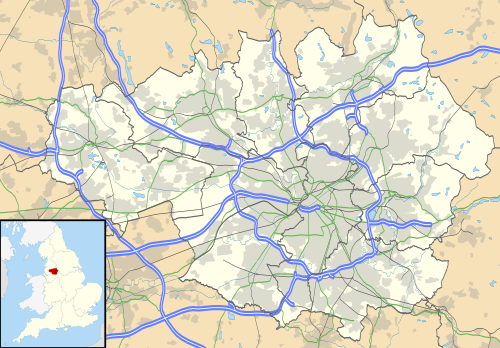Ashton-under-Lyne
 Ashton-under-Lyne.
Ashton-under-Lyne.Ashton-under-Lyne is a market town in Tameside, Greater Manchester, England. The population was 45,198 at the 2011 census. Historically in Lancashire, it is on the north bank of the River Tame, in the foothills of the Pennines, 6.2 miles (10.0 km) east of Manchester. "Ashton", deriving from Old English for "settlement by ash trees", probably dates from the Anglo-Saxon period. In the Middle Ages, Ashton-under-Lyne was a parish and township and Ashton Old Hall was held by the de Asshetons, lords of the manor. Granted a Royal Charter in 1414, the manor spanned a rural area of marshland, moorland, villages and hamlets. By the mid-19th century Ashton had emerged as an important mill town at a convergence of newly constructed canals and railways. The transport network allowed for an economic boom in cotton spinning, weaving, and coal mining, which led to the granting of municipal borough status in 1847.





